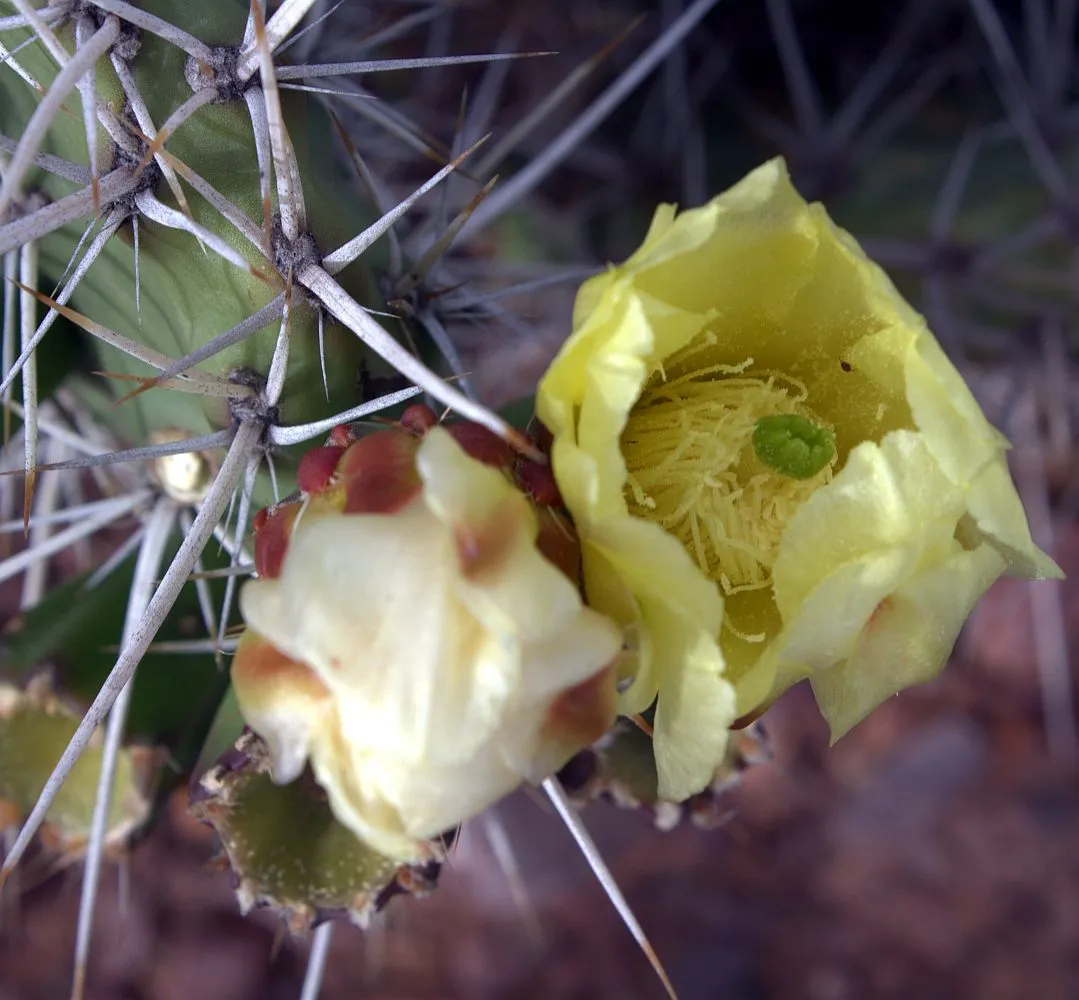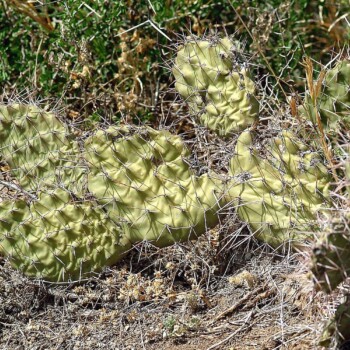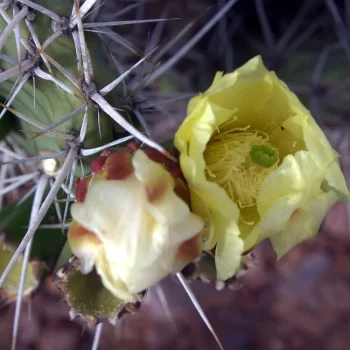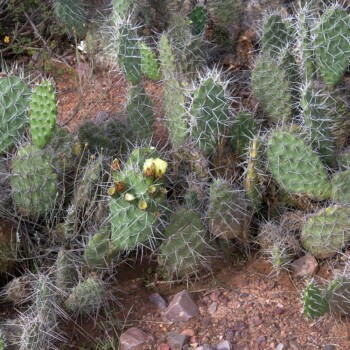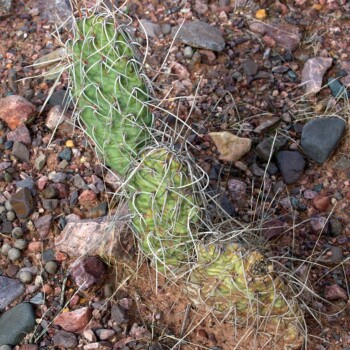Overview
Opuntia sulphurea is a wide-spread and common prickly pear in South America, from lowlands to highlands of Argentina and Bolivia, 350 m to 1800 m.
The Details
O. sulphurea is a low opuntiad, perhaps the general size of O. phaeacantha, ranging to 35 cm high and 1.5 m across. It several to multiple sprawling branches. Cladodes are obovate, elliptical, or subcircular 14-22 cm long and perhaps one-half that wide. The thick cladodes have elevated areoles that create a rugose or bumpy effect. Spines are often dirty white and twisted, but plants with dark spines have been reported. The cladodes are not fragile, but they detach easily.
The flowers are rich yellow or sulphur-yellow to 35 mm high and 45-55 mm across. The filaments are white, the anthers are pale yellow, the style is white, and the stigma is pale green to yellowish. Reddish and Yellowish fruit occur and the brownish seeds are about (3.5)4 mm in diameter. Plants with yellow or red fruit occur.
At least four varieties have been reported including hildemannii, sulphurea, spinibarba, and pampeana, but not all authorities recognize these varieties.
O. sulphurea is a good garden plant, and forms from high altitudes are likely cold hardy.
Additional Reading: Opuntia sulphurea in Northwest Argentina
